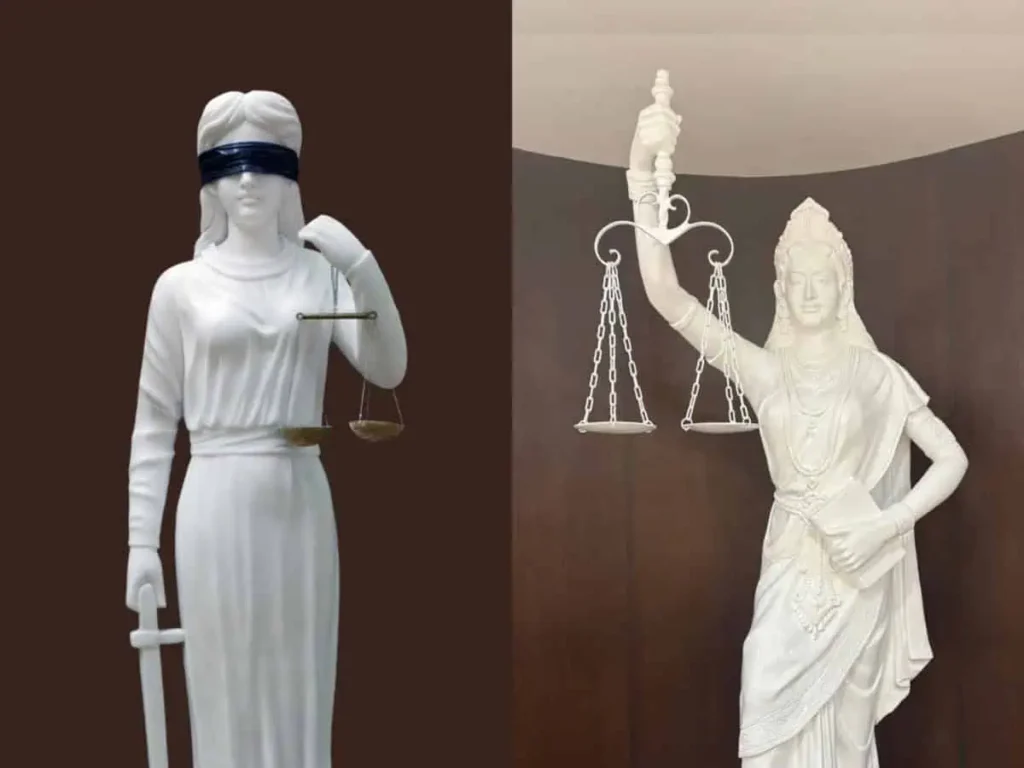October 18, 2024: The unveiling of the new Lady Justice statue at the Supreme Court of India’s Judges’ Library has sparked widespread attention for its innovative blend of tradition and modernity.

In a significant departure from conventional depictions, this version of Lady Justice removes the iconic blindfold, presenting a nuanced interpretation of the judicial process. This shift echoes the themes explored in producer Anand Pandit’s 2021 courtroom drama Chehre, where the film questions the notion of impartial justice and highlights the need for a deeper understanding of context and truth.
Traditionally, Lady Justice is depicted with a blindfold to symbolize fairness and objectivity, where justice is delivered without prejudice or bias. However, the new statue at the Supreme Court of India departs from this Western representation. In her left hand, she holds the Indian Constitution, emphasizing the centrality of the country’s legal framework to the Indian judiciary. The figure is also clad in a saree, symbolizing a shift towards embracing Indian identity, in contrast to the colonial robes that have historically dominated judicial imagery.
Anand Pandit had earlier explored this powerful symbolism in Chehre, where Amitabh Bachchan’s character delivers a line that directly challenges the traditional blindfolded figure of Lady Justice: “Kanun ki devi ko dekhna bhi padega, sunna bhi padega” (The goddess of justice must also see and hear).
In the film, the idea is that strict adherence to rigid legal frameworks can sometimes result in judgment rather than true justice. By shedding the blindfold, both in the film and now in the statue, the message is that justice must account for the complexities and nuances of each case to ensure fairness.
Pandit expressed his satisfaction with the Supreme Court’s decision to unveil the statue, which he sees as resonating with the film’s core message. In a recent interview, he highlighted how the blindfolded Lady Justice traditionally represented impartiality, but the decision to depict her without it in both Chehre and the Supreme Court statue reflects a deeper commitment to justice that is not blind to the realities of individual cases.
This symbolic move is also seen as part of a broader initiative to decolonize and modernize India’s judicial imagery and practices, aligning them more closely with the country’s contemporary values. The statue, while retaining the traditional scales of justice in her right hand to symbolize balance, emphasizes a justice system that is both empathetic and firmly rooted in the Indian Constitution and culture. This new representation of Lady Justice is not only a reflection of changing times but also an embodiment of a justice system that seeks to address the needs of a diverse and dynamic society.



